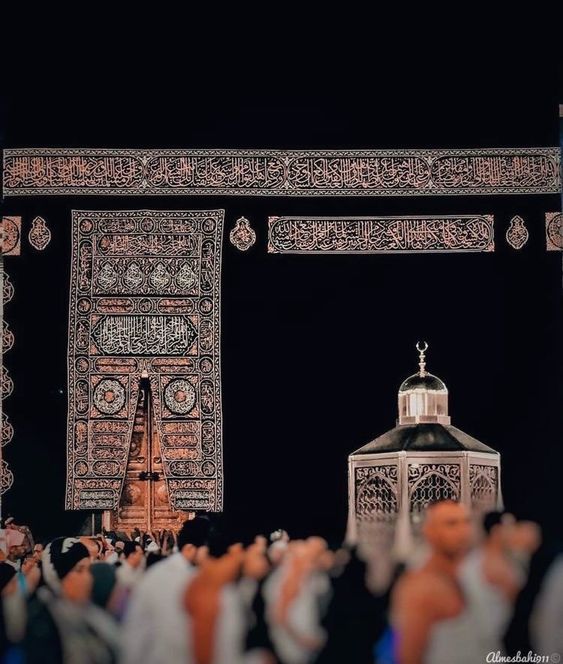Introduction
More than 2.5 million Muslims of all races, cultures and social classes travel to Makkah every year in Zil-Hajj for the pilgrimage of a lifetime and present themselves as equals in front of Allah (SWT) and complete the rituals of Hajj.
Hajj is one of the five founding pillars in Islam – these include:
- Imaan(Shahada)
- Namaz
- Zakat
- Roza
- Hajj
All Muslim brothers and sisters are required to perform Hajj once in a lifetime forms one of the five pillars of Islam however the following conditions apply:
- It is mandatory for all adult Muslims only – children are permitted to perform Hajj however it is not compulsory for them
- Also, all Muslims planning to perform Hajj need to be physically fit and capable
- Lastly, Muslims need to be financially able and independent of debts
Steps Of Hajj
Following are the key steps and stages of Hajj pilgrimage:
- Preparing for Hajj
- Wearing Ihram
- Completing Tawaaf Al-Umrah
- Sa’I ofSafa and Marwah
- Trimming ( Taqseer ) or Shaving Hair ( Halq )
- Praying and Waiting for Hajj to begin
- Wearing Ihram again for Hajj
- Reaching Mina for Stay
- Day of Arafah
- Overnight stay at Muzdalifah
- Performing Ramiand Hady
- Trimming of Hair / Shaving Head
- Tawaf e-Ifadha and Sa’i
- Performing Rami Again
- Overnight stay at Mina
- Performing Rami third time
- Tawaf al-Wida before leaving Makkah
Here we will explain each of these steps in detail.
1. Preparing For Hajj
The first step to prepare for Hajj is t decide in your heart that you want to perform Hajj with no worldly intentions and solely for the sake of Allah
2. Wearing Ihram
Ihram is the prescribed garment for Muslims to be worn throughout Hajj or Umrah.
For men, Ihram comprises two seamless pieces of cloth, normally white in color used to cover the body. For feet, sandals can be worn but heels and ankles need to remain exposed. As per the Hanafi school of thought, the entire upper part of the feet needs to remain exposed.
No specific dress code is required for women. Their clothing needs to be clean, modest, comfortable, and covering the entire body including the head. Women can wear socks but need to keep their hands and face exposed.
In preparation for wearing the Ihram Muslims must also ensure the following general hygiene practices:
- Clip / Trim your nails
- Remove hair under armpits and below the navel area
- Do Ghusl (Bath)
- Do not apply perfume
Ihram essentially represents a spiritual state wherein all Muslims appear before Allah dressed same without any worldly distinctions. Following restrictions apply while in state of Ihram:
- Do not smoke
- Sexual relations with your partnerare prohibited
- Do not shave hair or cut nails
- Use of perfume or fragrant soapis not allowed
- No fighting and arguments are allowed
- Hunting, killing, or unjustifiably breaking anything is also not allowed
After wearing the Ihram, pilgrims need to perform two Rakahs of Salah before to enter into the state of Ihram. This task needs to be completedbefore crossing the Miquaat.
Next, pilgrims need to make Niyyah for Umrah at or close to the Miquaatand it is recommended to recite the words verbally. Following are the three recommended options for the Niyyah:
- لَبَّيْكَ اللَّهُمَّ عُمْرَةً – O Allah, here I am to perform Umrah
- اللَّهُمَّ إِنِّيْ أُرِيْدُ الْعُمْرَةَ – O Allah, I intend to perform Umrah
- اللَّهُمَّ إِنِّيْ أُرِيْدُ الْعُمْرَةَ فَيَسِّرْهَا لِيْ وَتَقَبَّلْهَا مِنِّيْ – O Allah, I intend to perform Umrah, so accept it from me and make it easy for me
After completing the Niyyah, pilgrims must recite the Talbiyah at least once briefly pausing four times as follows:
لَبَّيْكَ اللهُمَّ لَبَّيْكَ – لَبَّيْكَ لَا شَرِيْكَ لَكَ لَبَّيْكَ – إِنَّ الْحَمْدَ وَالنِّعْمَةَ لَكَ وَالْمُلْكَ – لَا شَرِيْكَ لَكَ –- At Your service, Allah, at Your service. At Your service, You have no partner, at Your service. Truly all praise, favor and sovereignty are Yours. You have no partner.
Once you utter the Talbiyah, your state of Ihram will start – you are now a Muhrim. Remember, any violation of Ihram rules will require Dumm or Sadaqah to expiate.
3. Completing Tawaaf Al-Umrah
As you travel into the Haram limits, continue with Dhikr and Durood upon the Prophet ﷺ. Following duaais recommendedas you enter Haram limits:
اَللَّهُمَّ هَذَا حَرَمُكَ وَأَمْنُكَ فَحَرِّمْنِي عَلَى النَّارِ، وَأَمِنِّي مِنْ عَذَابِكَ يَوْمَ تَبْعَثُ عِبَادَكَ، وَاجْعَلْنِي مِنْ أَوْلِيَائِكَ وَأَهْلِ طَاعَتِكَ – Allah, this is Your sanctuary and security, so make me unlawful to Hell-Fire, make me safe from Your punishment on the day You resurrect Your servants; and make me one of Your friends and one of the people who obey You.
Although pilgrims can enter from any of its doors, it is Sunnah to enter Masjid al-Haram from Bab al-Salam (the Gate of Peace). Enter with your right foot first and read the duaa for mosque entry as below:
.بِسْمِ اللهِ، اللَّهُمَّ صَلِّ عَلَى مُحَمَّدٍ. اللَّهُمَّ اغْفِرْ لِي وَافْتَحْ لِي أَبْوَابَ رَحْمَتِك – In the name of Allah, send blessings upon Muhammad ﷺ. O Allah, open for me the doors of Your Bounty.
After entering Masjid al-Haram, keep your eyes lowered until you reach the Mutaaf area and when you are ready, lift your gaze to view the Kaaba, raise your hands and make duaa with conviction that in sha Allah it will be answered.
To begin the Tawaaf, male pilgrims must uncover their right shoulder and pass the top sheet of their Ihram under their right armpit, allowing it to rest on their left shoulder. Next, all pilgrims must stand in line with the Hajr al-Aswad corner of the Kaaba. A green light on the wall of the Masjid opposite the Kaaba also indicates where the Tawaf starts from.
Make the Niyyah to perform Tawaf solely for Allah and begin the walk. In the first three rounds, men should preferably walk quickly unless there is congestion.
During your Tawaf, recite duaas and supplications of your choice – remember that duaas are accepted during Tawaf so make the most of this opportunity by demonstrating sincerity and devotion towards Allah
Rukn al-Yamani (the Yemeni Corner) is the corner preceding the Hajar al-Aswad. When you reach it, you should touch it with your right hand or both hands and say “Allāhuakbar (اللّٰهُ أَكْبَرُ)” if congestion permits. As youmove from Rukn al-Yamani to Hajr al-Aswad, continue reciting the following Dua:
رَبَّنَا آتِنَا فِي الدُّنْيَا حَسَنَةً وَفِي الْآخِرَةِ حَسَنَةً وَقِنَا عَذَابَ النَّارِ- O our Lord, grant us the good of this world, the good of the Hereafter, and save us from the punishment of the fire.[Surah Al-Baqarah, 2:201]
Reaching Hajar al-Aswad again marks the completion of one round. Repeat the same process for 6 more rounds. Say “Allāhuakbar (اللّٰهُ أَكْبَرُ)” facing Hajr al-Aswad and continue with second as well as all subsequent rounds. Remember, you will be saying Allāhuakbar eight times in total throughout the Tawaf.
Complete the Tawaf in a single, continuous gounless there is Jamaat for prayer in which case, Tawaaf can be interrupted and then resumed from where it was left.
Once you finish the Tawaaf. Pray two Rakahs of Salah, preferably keeping Maqam Ibrahim between yourself and the Kaaba. However, if the area is very crowded, the prayer can be performed anywhere in Masjid al-Haram.
Next, drink your fill of Zamzam water reciting the following Dua after drinking the water:
اللَّهُمَّ إِنِّي أَسْأَلُكَ عِلْمًا نَافِعًا وَ رِزْقًا وَاسِعًا وَ شِفَاءً مِنْ كُلِّ دَاءٍ – O Allah, I ask You for knowledge that is beneficial, provision that is abundant and a cure from every illness.
4. Sa’i Ofsafa And Marwah
Performing Sa’i immediately after Tawaf is Sunnah but a break can be taken if needed. Before Sa’i, It is masnoon to do Istilam of Hajar al-Aswad one last time before starting Sa’i. To begin Sa’I, proceed to the hill of Safa reciting the following once only:
ِإِنَّ الصَّفَا وَالْمَرْوَةَ مِن شَعَائِرِ اللَّهِ- Indeed, Safa and Marwa are from the Signs of Allah.
[Surah al-Baqarah, 2:158]
Followed by:
أَبْدَأُ بِمَا بَدَأَ اللهُ بِهِ – I begin with that which Allah has begun with.
Upon reaching the hill of Safa, face the direction of the Kaaba and make duaas. After that, move towards Marwa. On your way, there will be two sets of green fluorescent lights – men should run at a medium pace between them every time they pass from the green-lighted area. Continue duaas during your walk.
Upon reaching the hill of Marwa, face the direction of the Kaaba and make duaas again. This completes one lap of Sa’I and returning back to Safa will complete a second lap. The walk needs to be completed seven times so that it ends at the hill of Marwa.
Pilgrims should make a final Dua at this time and if possible, perform two Rakahs of Nafl Salah as well. Once done, you can exit Masjid al-Haram – step out with your left foot and recite the following Sunnah Dua:
بِسْمِ اللهِ وَالصَّلَاةُ وَالسَّلَّامُ عَلَى رَسُولِ اللهِ، اللَّهُمَّ إَنِّي أَسْأَلُكَ مِنْ فَضْلِكَ- In the name of Allah, and peace and blessings be upon the Messenger of Allah. O Allah, I ask of you from Your bounty.
5. Trimming ( Taqseer ) Or Shaving Hair (Halq)
Next, to complete the Umrah, pilgrims need to have their hair shaved (Halq) or trimmed (Taqsir) an inch at least before leaving the state of Ihram. Completely shaving the head for men is more virtuous whereas for women, only trimming is required.
6. Praying And Waiting For Hajj To Begin
Upon completing Halq or Taqsir, pilgrims can remove the Ihram and wear regular clothes. All restrictions associated with Ihram will also end here. Muslims should rest and pray during this time as the main activities of Hajj will start on the 8th of Zil-Hajj.
7. Wearing Ihraam Again For Hajj
8th of Zil-Hajj, marks the beginning of Hajj and on that day, Muslims re-enter in state of Ihram following steps outlined in section 2 above.
8. Reaching Mina For Stay
Pilgrims will then transfer to valley of Mina near Makkah where they will be based for the next 5 days Upon arrival in their designated tent and continue duaas while also praying at prescribed times.
9. Day Of Arafah
Upon sunrise, pilgrims travel to the plain of Arafah, continuously reciting Istaghfar to seek Allah’s forgiveness. In Arafah, pilgrims pray shortened versions of Dhuhr and Asr prayers together. On the day of Arafah, the Hajj sermon is delivered in Masjid-e-Nimra which may or may not be audible throughout Arafah.
Regarding day of Arafah, according to Surah al-Maidah, it is the day when Allah (SWT) perfected His religion, completed His blessings upon Prophet Muhammad (PBUH) and approved Islam as the way of life!
Prophet Muhammad ( PBUH) said:
“There is no day on which Allah frees people from the Fire more so than on the day of ‘Arafah. He comes close to those (people standing on ‘Arafah), and then He reveals before His Angels saying, ‘What are these people seeking.”
Hadith | Muslim
It is therefore highly recommended that all Muslims make lots of duaas and seek forgiveness and blessings from Allah (SWT)
10. Overnight Stay At Muzdalifah
Pilgrims continue to pray in Mina and upon sunset, they move to Muzdalifah located between Mina and Arafah where they spend the night under open sky. Upon reaching Muzdalifah pilgrims perform Maghrib and Isha prayers together with separate prayers call for each as per Sunnah.
In Muzdalifah, pilgrims also collect pebbles to perform Rami (the stoning of the devil) over the next three days – a total of 49 pebbles are required for the complete ritual however, it is recommended to pick up some extra pebbles as a precaution.
11. Performing Rami And Hady
The 10th of Zil-Hajj is the Day of Sacrifice (Qurbani). After praying Fajr, pilgrims return to Mina while continuing to recite Talbiyah. In Mina, pilgrims perform Qurbani and complete Day 1 of Rami (Stoning of Devil) while Muslims around the world celebrate Eid-ul-Adha and offer qurbani.
The stoning of the Jamarat (Devil) called Rami is when Hajj pilgrims throw pebbles at three symbolic stone structures in Mina across three days. The first stoning day occurs on the 10th of Zil-Hajj.
This act symbolizes the actions of Hazrat Ibrahim (AS) when Iblees (Shaitaan) repeatedly tried to stop him from sacrificing his son Hazrat Ismail (AS) as commanded by Allah (SWT). Iblees appeared three times and every time, Hazrat Ibrahim threw stones at him as directed by Allah (SWT) and conveyed through Hazrat Jibraeel (AS).
Pilgrims perform Rami in days 10, 11 and 12 of Zil-Hajj as per below:
7 pebbles for the 10th of Zil-Hajj
21 pebbles for the 11th of Zil-Hajj
21 pebbles for the 12th of Zil-Hajj
On day 1, pilgrims head to Jamarat al-Aqaba, the largest pillar, and throw the seven pebbles at this concrete pillar only.
Upon each throw, pilgrims recite takbir:
“اللهُ أَكْبَرُ” – ( Allāhu ‘Akbar ) – Allah is The Greatest
12. Trimming Of Hair / Shaving Head
After offering qurbani, pilgrims shave or trim hair for males. Shaving the head completely is preferable as this was done by Prophet Muhammad (PBUH). For women, they need to trim their hair equal to the length of a fingertip.
At this time, pilgrims can exit the state of Ihram and wear regular clothes. They should also apply perfume as it is sunnah of Prophet Muhammad (PBUH).
13. Tawaf E-Ifadha And Sa’i
Pilgrims now travel to Makkah and perform Tawaf al-Ifadha followed by complete run if Sa’I as part of the requirements for Hajj as both these steps are obligatory. Upon their completion, all lawful and Halaal activities prior to Ihram are permitted again.
After Tawaf e-Ifadha and Sa’I, pilgrims need to return to Mina and complete the rest of their stay and remaining rituals of Hajj.
14. Performing Rami Again
On 11 Zil-Hajj, pilgrims perform Rami (Stoning of Iblis) the second time. Main difference is that all three pillars are stoned with 7 pebbles each starting with the first one, followed by the second and lastly the third. For each stone, pilgrims need to say Takbir and make duaa at each pillar facing Haram.
15. Overnight Stay At Mina
After second Rami, pilgrims return to their camps in Mina and spend the rest of the day praying and making duaas
16. Performing Rami Third Time
On 12 Zil-Hajj, pilgrims repeat the Rami ritual same as for the second time wherein all three pillars are stoned.
17. Tawaf Al-Wida Before Leaving Makkah
After completing the third round of Rami, pilgrims can leave Mina for Makkah before sunset. If however, they are still in Mina at sunset, they need to spend another night in Mina. The permitted time for Rami 12 Zil-Hajj is Zawaal to next Dawn so it is recommended to complete the ritual before sunset as it is Sunnah as well.
If they leave Mina on 12 Zil-Hajj, pilgrims must perform Tawaf Al-Wida Wada of Kaaba in Makkah. Wearing Ihram is not required and Sa’I is also not required after Tawaf Al-Wida however two rakaat salah is mandatory behind Maqaam-e-Ibrahim.
With the Tawaf Al-Wida done, all rituals of Hajj are completed. For pilgrims who remain in Mina beyond sunset of 12 Zil-Hajj, they need to perform Rami again next day and then they can travel to Makkah to perform Tawaf Al-Wida after which, there Hajj will be complete as well,
Al Hamd O Lillah !!
We at Salah Travels work closely with all our customers to give them a memorable Hajj experience. We hope that the above guidelines will help you prepare for an excellent journey full of reflection and awakening.
Discover Cheap Hajj Packages from USA with Salah Travels.




